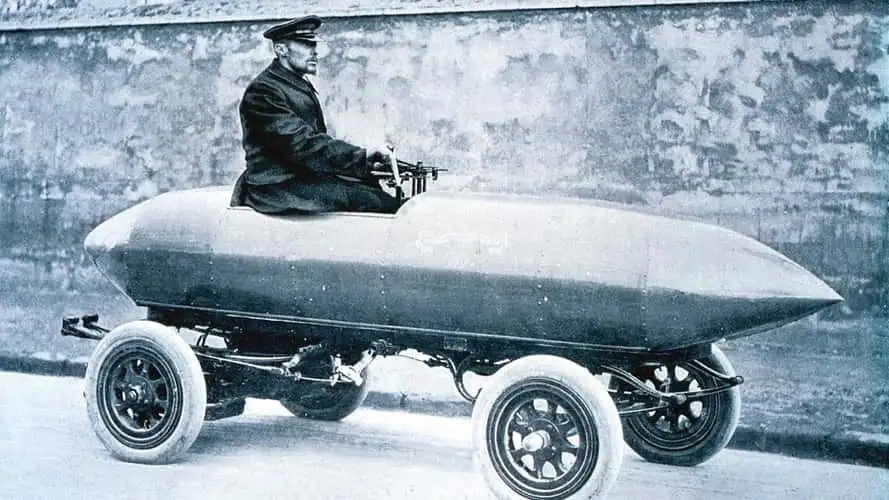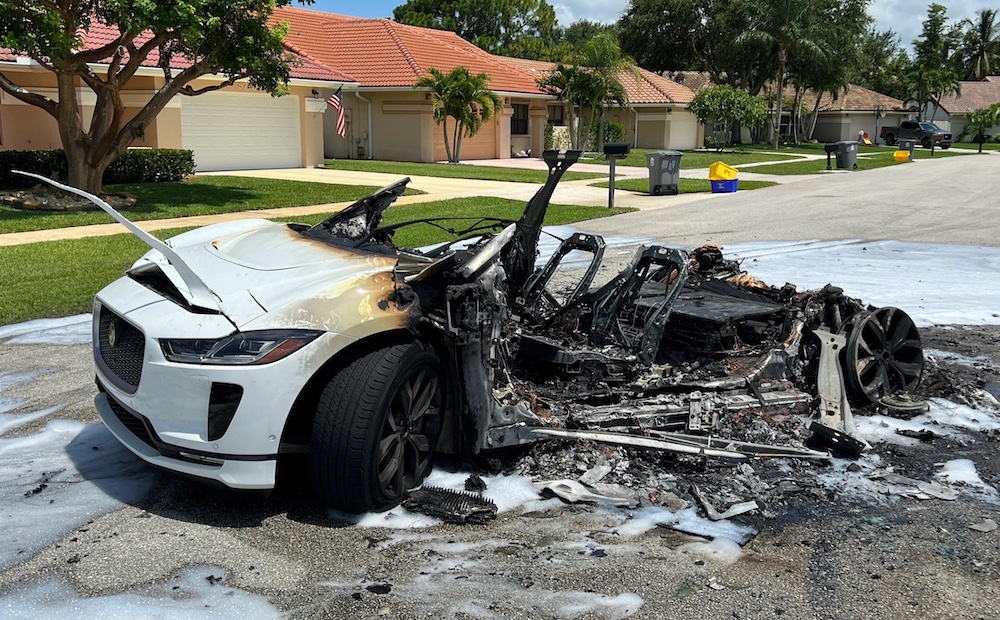
Posted on 09/18/2024 12:44:03 PM PDT by Red Badger
At the turn of the 20th century, there were thousands of electric vehicles in operation around the world.
==================================================================
By the 1890s, steam had established itself as the main source of power for trains, industrial applications and even the occasional passenger car. Gasoline-powered personal transportation was still in its infancy. So electric vehicles were preferred by most because they didn’t require a dangerous crank-starting procedure, they didn’t backfire and spew oil everywhere, and they were perceived as quiet and torquey.
Remember, this was a time when you'd get gasoline from your local pharmacist or the area blacksmith, if you had either, not a gas station on every corner.
If you were around back then you'd probably be more into batteries too.

The two-decade period from the 1890s until the 1910s is considered by historians as having been the peak of electric vehicle adoption before EVs fell out of favor for a century until they became popular again in the 2010s when cars like the Nissan Leaf and Tesla Model S were introduced.
It may come as a surprise, but around 38% of all motor vehicles registered in the United States in 1900 were electric. That's a total of 33,842 EVs, which grew to over 38,000 by 1912.
EVs also held early motor car records including for the fastest vehicle. The torpedo-shaped Le Jamais Contente (“The Never Satisfied”), for instance, built by Belgian Camille Jenatzy, was the first car to exceed 62 mph (100 km/h) in 1899. It was powered by a pair of electric motors and had a lightweight shell made out of an aluminum alloy. Its aerodynamic shape, however crude, was a far cry from the tall and ungainly horseless carriages of the time, and this, combined with its silent electric power, made it way ahead of its time.

Several manufacturers began series production of EVs in the early 1900s. Most of them were from America, like the Waverly Company, Studebaker Electric, Beardsley Electric Company, Columbia Electric and Baker Electric.
They each built a few hundred EVs for both personal and commercial use, but the most prolific manufacturer of early EVs (by number of vehicles sold) was Detroit Electric, which was in business between 1907 and 1939.
Detroit Electric is said to have built a total of about 13,000 EVs, and during its peak after 1910, it was selling between 1,000 and 2,000 battery-powered cars per year—it would take almost exactly 100 years for its annual EV sales figures to be exceeded.
These early EVs were marketed as luxurious city runabouts, and many celebrities used them to run errands around town. Some shopping centers even had electric car chargers to encourage wealthy EV owners to do their shopping there.

Most EVs of the time had a limited range, no more than 40 miles on one charge, and a top speed of about 20 mph. Some of the longest-range EVs were made by the Los Angeles-based Beardsley Electric Company, which got 35 of its cars together in April of 1916 for a grand tour of Southern California. The cars reportedly averaged about 70 miles of range, which was really impressive for the time, although still not enough to match combustion cars.
It's worth noting that many of these early EVs were especially popular with, and marketed to, women. Early gas cars took tremendous strength to start and a backfiring hand crank could break a grown man's arm—not to mention how bad they smelled. Many women found the quiet, lack of smells and ease of use of electric cars to be a vastly preferable experience, and automakers responded in kind.
"You can learn to run The Baker in 20 minutes," one early advertisement read. "It far exceeds all other electrics in simplicity, safety, as well as mileage and speed. It is noiseless and clean; having a battery capacity of 70 to 100 miles, it is unequalled for city and suburban use."

Another famous electric car of the early 1900s was Oliver Parker Fritchle's 100-Mile Fritchle Electric, which, as its name implied, could travel 100 miles on one charge. It weighed around 2,100 pounds, it had a 10-horsepower electric motor and thanks to its eight speeds could reach a peak of 25 mph.
It is also one of the earliest known electric vehicles to successfully employ brake energy recuperation (or "electric brakes" as the feature was known back in the day.)
There were also electric vans being manufactured in the early 1900s, which were used by some businesses for last-mile delivery duty, but they were also ambulances and police wagons. In the United Kingdom, electric milk delivery vehicles (known as “milk floats”) entered service in the early 1900s, and they evolved and remained electric over many decades before supermarkets and home refrigerators made them obsolete.
The biggest problems faced by early EVs were their high cost, limited range, expensive batteries that took a long time to charge and the fact that combustion engine cars were getting better. Sound familiar?
What sealed the fate of early EVs was the proliferation of the electric starter motor, which eliminated the need for those difficult hand-crank engines. This was such a revolution that by the mid-1920s it had put almost all electric car manufacturers out of business.
But the battery-powered car itself was far from done, even then. In our next installment, we'll look at the original EV downturn and how the fuel and resource shortages of World War II and its aftermath nearly gave the idea life again.
Did You Know?
The 1922 Detroit Electric was a posh two-door EV that sold for almost $3,000 in an era when a Ford Model T cost less than $500—that's about six times more. It had a top speed of around 25 to 30 mph and it could travel up to 90 miles on one charge.
SEVERAL VIDEOS AT LINK.......................
Ping!.................
And they sucked back then too.
But, but, oversized electric golf carts are teh fastar, just ask a fanbois.
There is a vintage electric car in the Perry Mason episode “the case of the borrowed baby”.
Will the gubment get out of the way of EV's and charging and let the free market decide on charging options? Keep in mind that for most EV charging, charging stations are needed only for road trips and not for local charging. IMHO, there's some money to be made by people who already own restaurants or convenience stores. But those entrepreneurs might be afraid of the huge up front costs to set up a few chargers if they keep hearing the Dims say that the gubment will put up competing chargers everywhere. It's hard to compete with crony capitalism.
It wouldn't be called the first one because we have yet to have a second one.

Some of the early EV companies featured easily changeable batteries - it took minutes, not hours, to switch out a depleted battery for a fully charged one, and you’re back on the road. That’s the way to go if you want to extend EV range.
And if we keep on regressing, soon we’ll see Stanley Steamers.
From the Wiki people: “Steam cars outnumbered other forms of propulsion among very early cars. In the U.S. in 1902, 485 of 909 new car registrations were steamers.”
I respectfully disagree. We're already at a usable range for trips for the more populated areas (read: many fast charging options). For example, I recently made a long trip (1,700 miles) in our EV. The only time my charging took longer than 15 minutes was when I was stopped longer anyway to do work on my laptop. I stayed there for a full hour and wound up charging to 100% (after 80%, the last 20% takes a lot longer, but I had to do some work anyway so I stayed on the charger longer than I had to).
But that kind of trip with nothing but speedy charging stops happens only if you plan ahead of time. And only on trips that have a lot of fast chargers. I probably wouldn't be able to make that drive in 32 hours (driving and charging/break time, not counting the 10 hours I stayed at a hotel and the aforementioned work time) if those 1,700 miles were through remote areas in the midwest or west Texas (the last time I looked at driving through those areas). For a trip like that I'd take my gas pickup. Likewise, the gas pickup will be preferable if charging prices increase and gas prices decrease.
For the first time today, I saw a Tesla being driven aggressively. Out in the Hamptons. Seemed weird, they usually always just purr along.
Great article assembly Badger... :)
Most long distance transportation was by train or boat.
Most destinations were within a few blocks to 20 miles or so of a train station or boat dock.
Most of them used Edison batteries that got better with usage and time and were safe.
Today, except for urban dwellers and some suburban ones and a rare few rural folks, EVs make sense.
Well, except for that possible being burned to a crisp thing.

How much do paid EV lobbyists make? You should know.
I see the chicoms now have glorified golf carts for $10K. Sure to be a hit around town.
Disclaimer: Opinions posted on Free Republic are those of the individual posters and do not necessarily represent the opinion of Free Republic or its management. All materials posted herein are protected by copyright law and the exemption for fair use of copyrighted works.